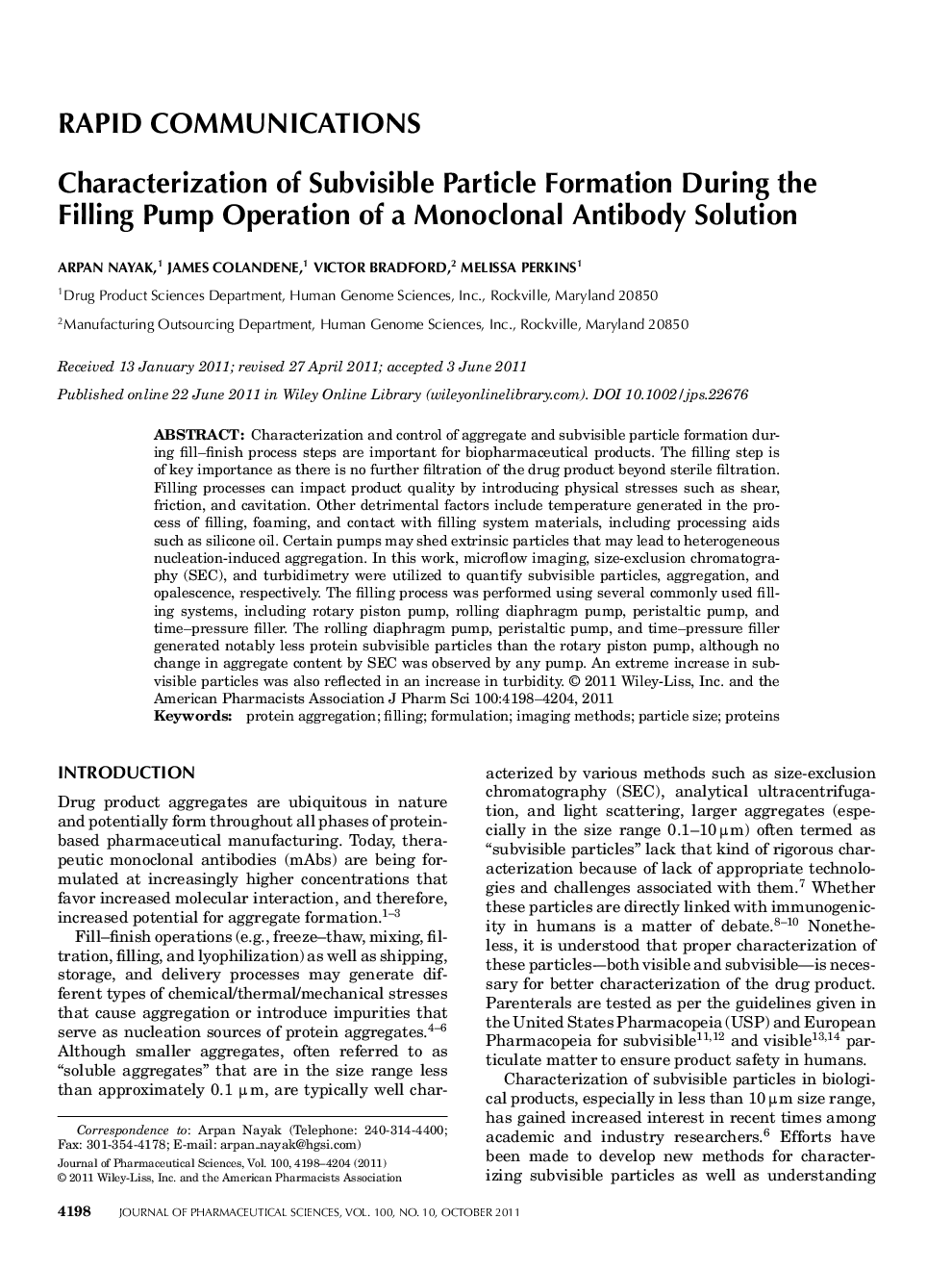| Article ID | Journal | Published Year | Pages | File Type |
|---|---|---|---|---|
| 2485309 | Journal of Pharmaceutical Sciences | 2011 | 7 Pages |
Abstract
Characterization and control of aggregate and subvisible particle formation during fill-finish process steps are important for biopharmaceutical products. The filling step is of key importance as there is no further filtration of the drug product beyond sterile filtration. Filling processes can impact product quality by introducing physical stresses such as shear, friction, and cavitation. Other detrimental factors include temperature generated in the process of filling, foaming, and contact with filling system materials, including processing aids such as silicone oil. Certain pumps may shed extrinsic particles that may lead to heterogeneous nucleation-induced aggregation. In this work, microflow imaging, size-exclusion chromatography (SEC), and turbidimetry were utilized to quantify subvisible particles, aggregation, and opalescence, respectively. The filling process was performed using several commonly used filling systems, including rotary piston pump, rolling diaphragm pump, peristaltic pump, and time-pressure filler. The rolling diaphragm pump, peristaltic pump, and time-pressure filler generated notably less protein subvisible particles than the rotary piston pump, although no change in aggregate content by SEC was observed by any pump. An extreme increase in subvisible particles was also reflected in an increase in turbidity. © 2011 Wiley-Liss, Inc. and the American Pharmacists Association J Pharm Sci 100:4198-4204, 2011
Related Topics
Health Sciences
Pharmacology, Toxicology and Pharmaceutical Science
Drug Discovery
Authors
Arpan Nayak, James Colandene, Victor Bradford, Melissa Perkins,
